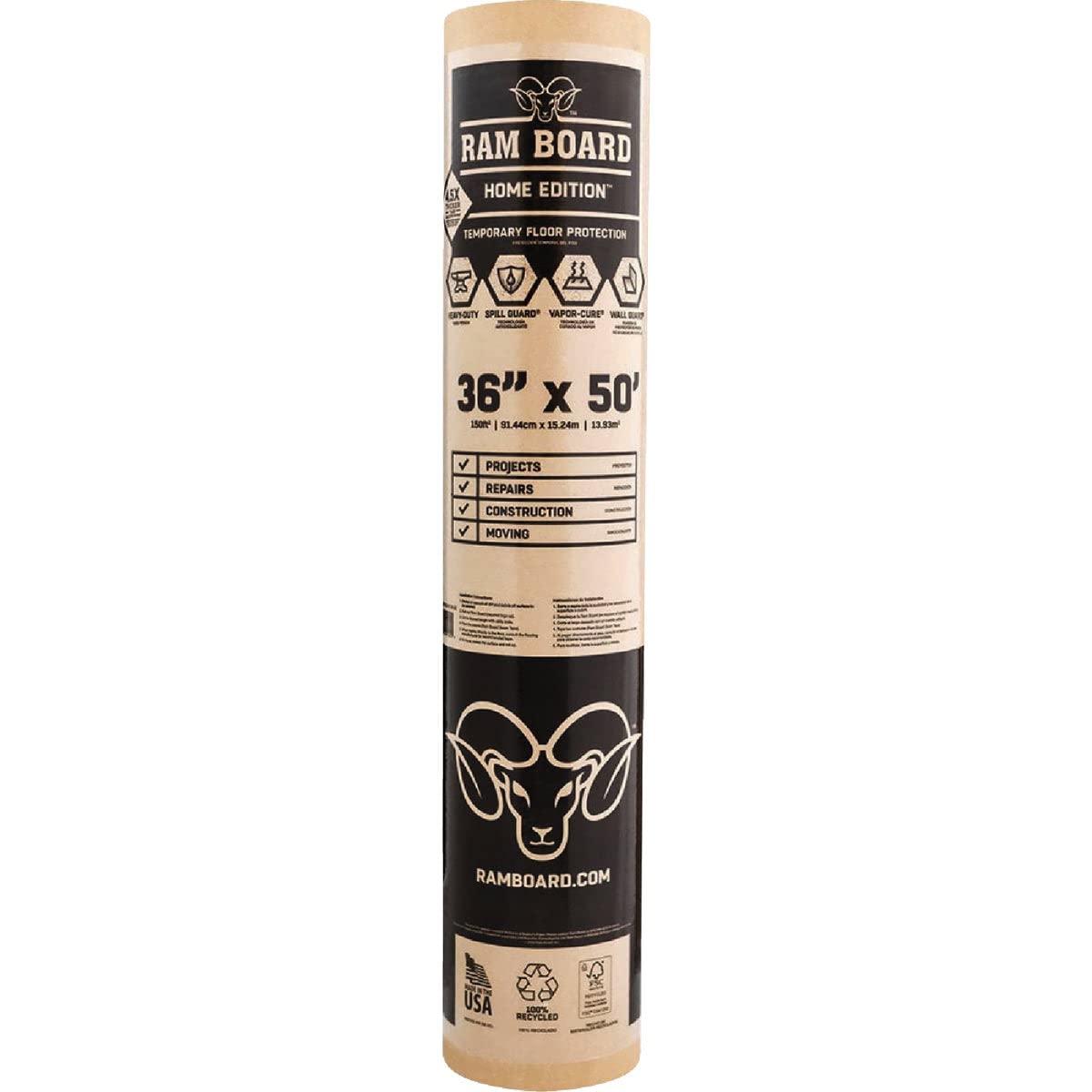One of our most searched questions from readers is: Does Ram Board really work?
We’ve been using Ram Board almost since it first came out. We’ve dumped tons of plaster on it and it protected the floor below. Essentially the 1-ton dump truck of the paper world, Ram Board is a total go-to when floors need to be protected. It is also ideal for other tasks you might find less than typical.
We just completed a 2-month bathroom remodel/front hall remodel/makeover. I put Ram Board in Day One and took it out weeks later. In the meantime—unlike drop cloth runners that I have also used—I never really thought about it again.
What makes Ram Board better than a drop cloth?
Because it installed flat and stayed flat. I could vacuum and sweep it at the end of the day. It’s rigid enough that I can use a grain scoop shovel or dust pan and screed material right off it. The material goes, the Ram Board stays.
It’s also ideal for edge-to-edge coverage, especially when paint is involved.
TIP: I like my Hyde Tools 25mm utility knife for, well, everything. But it is ideal for cutting RamBoard sections, notches, etc. Why? The long blade. RamBoard is tough, and typical utility knife blades cut it, but a long 25mm blade optimizes the angles of attack as I slice through a roll.
How do we install Ram Board?
Tape has come a long way since I started using Ram Board, but generally speaking, blue painter’s tape ain’t happenin’. Ram Board has their tapes, of course, but I also used Dolphin’s plastic-to-plastic tape and it worked super great holding the Ram Board both to itself and the tile floor I was covering. And when I needed it to release, it released perfectly.
TIP: When installing the Ram Board, cut it such that you have at least 1½-inch of bare floor on the edges so the tape—whether it’s Ram Board’s proprietary tapes or other tape—has surface area to adhere to. Use at least a 2-inch wide tape.
What about Ram Board ProSheets?
You don’t always need wall-to-wall coverage, so there’s Ram Board ProSheets. For example, my tile subcontractor sets up the tile saw on a drop cloth to catch overspray. I hate drop cloths. I’d have a piece of ProSheet on the truck for the rest of my life if I were him. And, with water repellents built in, it’s a no brainer for the wet saw.
Similarly if I were building a deck or otherwise working with composite materials and my table saw didn’t have Skil’s unimprovable angled dust chute that directs my table saw dust into a bucket. I’d set up an outfall of ProSheet so the composite lands on something I can easily clean-up and don’t care if it gets rained or walked on.
Using Ram Board for a demo ‘red carpet.’
I process my own demo materials, mainly decks, in my dump truck. So I’m in and out of a lot of gates where a muddy patch has formed. Rather than slosh around in it, throw a ProSheet or a few strips of Ram Board as a red carpet for stuff and keep the mud in the ground where it belongs.
Similar for off-loads. When I deliver mulch, pea-gravel or ¾-clean for stone bases for my decks, there is spillover between the dump truck and the wheelbarrow or my might tractor and it gets tangled up in grass and roots and is hard to clean up. Not so on a ProSheet.
Bottom line: Ram Board works. It’s also made from 100 percent recycled material.
About the Author



